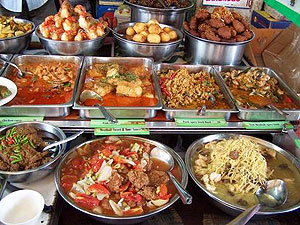Since all herbs and spices contain medicinal properties, they should be used in moderation. Ground allspice is a mixture of spices. It is especially used as a seasoning for meats, soups, and deserts. Allspice contains quercetin, a nutrient that helps to prevent allergies. Allspice also helps to provide relief from indigestion and flatulence. Anise is an annual plant with a strong licorice flavor. It is used as a seasoning to compliment both sweet and savory foods such as cakes, biscuits, seafood and poultry.


Since all herbs and spices contain medicinal properties, they should be used in moderation. Ground allspice is a mixture of spices. It is especially used as a seasoning for meats, soups, and deserts. Allspice contains quercetin, a nutrient that helps to prevent allergies. Allspice also helps to provide relief from indigestion and flatulence.
Anise is an annual plant with a strong licorice flavor. It is used as a seasoning to compliment both sweet and savory foods such as cakes, biscuits, seafood and poultry.
Anise contains medicinal properties that help to relieve congestion from allergies, colds, and flu. It has also been used to treat digestive problems and to help relieve menstrual cramps.
Arrowroot powder is the edible starch that comes from the rhizomes of the arrowroot plant. It is used as a thickening agent in many foods such as puddings, sauces, gravies, jellies, fruit pies, and biscuits.
Due to its great digestibility compounds arrowroot starch is used as a primary ingredient in infant cookies instead of wheat flour. The starch helps to soothe digestive conditions such as irritable bowel syndrome.
Basil is a tender low-growing herb. It is commonly used fresh in cooked recipes, and added at the last moment because cooking quickly destroys its flavor.
Basil has health benefits for alleviating conditions such as digestive problems, cancer, diabetes, high cholesterol, arthritis, and several others.
Fresh or dried bay leaves are often used to flavor soups, stew, braises and pâtés in Mediterranean Cuisine. Bay leaves have been used medicinally for lowering blood sugars and slowing weight gain.
Although bay leaves are safe to eat, they remain very stiff even after thorough cooking. Because of this, bay leaves are not considered to be eaten.
Eating whole bay leaves may also pose a risk of general injury to the throat. This is the reason why all recipes that use bay leaves will recommend their removal after the cooking process has finished.
Celery is used around the world as a vegetable, either as the leaf stalk or the fleshy taproot. In temperate countries, celery is also grown for its seeds.
Celery seeds can be used as flavoring or spice either as whole seeds or, ground and mixed with salt, as celery salt. Celery salt can also be made from an extract of the roots.
Celery salt is sometimes used to season tomato and vegetable juices, meat roasts, and seafood. Seeds intended for cultivation are not suitable for eating as they are often treated with fungicides.
Celery seed is a traditional remedy for nervous stomach and for relieving flatulence.
A few people have severe allergic reactions to celery. For people with celery allergy, exposure can cause potentially fatal anaphylactic shock.
Chili powder is a generic name for any powdered spice mix composed chiefly of chili peppers, usually either red peppers or cayenne peppers, which are both from the Capsicum family.
The spice mix may simply be pure powdered chilies, or it may have other ingredients included such as cumin, oregano, garlic powder, and salt.
As a result of the various different potential additives, the spiciness of any given chili powder is incredibly variable.
Do not touch your eyes with the hands after they have handled capsaicin cream. Excessive use internally may result in gastro-intestinal upset.
Chives are the smallest species of the onion family. They are a common household herb, frequent in gardens as well as in grocery stores. Chives can be added to foods such as fish, potatoes, omelets and scrambled eggs, and soups.
Their insect repelling properties make them valuable as a pest control in gardens. Chives help to lower blood pressure. They are also rich in vitamins A and C, and contain trace amounts of sulfur and iron.
Since chives are usually served in small amounts and never as the main dish, negative effects are rarely encountered, although digestive problems may occur following over consumption.
Ends


